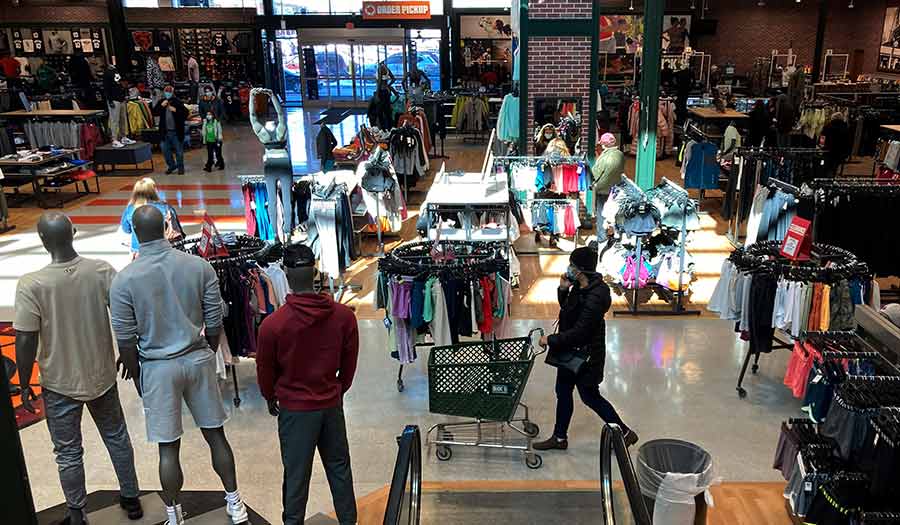 AP/Nam Y. Huh
AP/Nam Y. Huh
World News Desk
Learn the why behind the headlines.
Subscribe to the Real Truth for FREE news and analysis.
Subscribe NowNEW YORK (AP) – Consumers are expected to use “buy now, pay later” payment plans heavily this holiday season, a forecast that bodes well for retailers but that has credit experts again sounding alarm bells.
The short-term loans often come with consumer-friendly interest rates and allow shoppers to make an initial payment at checkout, then pay the rest in installments, typically over a few weeks, even months. That can be appealing to a shopper buying multiple gifts for family and friends during the holidays, particularly if they are balancing other debt such as student loans or credit cards.
Data shows younger consumers and those with difficulty accessing credit use the loans most frequently. Used responsibly, the installment plans increase financial inclusion, according to the Federal Reserve Bank of New York. But the Fed and some analysts say key features of the plans can make borrowing too easy and saddle consumers with excessive debt.
Short-term installment loans drove $6.4 billion of online spending in October, up 6 percent year over year, according to a recent Adobe Analytics report on online shopping. Adobe expects usage to peak in November with spending of $9.3 billion, including a single-day record of $782 million on Cyber Monday. Overall, Adobe estimates one in five Americans plan to use buy now, pay later plans to purchase holiday gifts.
Vivek Pandya, lead analyst for Adobe Digital Insights, said that “rising interest rates, inflation in food prices, and resuming student loan repayments” have increased costs for consumers, but “data has shown that the consumer remains resilient heading into the big holiday season and (they) are embracing every opportunity to manage their budgets in more efficient ways.”
‘Buy now, pay later’ loans tend to follow a shared model. The lender runs a soft credit check on applicants, then asks for a down payment at the time of purchase along with an agreement to make between four and six payments at two-week intervals, though terms vary. Zero-interest loans are common initial offerings.
If a customer pays late or misses payments, however, they can be shut out from using the app, or face interest or fees. Sometimes these are flat amounts, as much as $25, and sometimes they are calculated as a percentage of the outstanding loan.
Pay-in-installment companies collect fees from merchants who are grateful for the increased business. Retailers have found that customers offered a buy now, pay later option are more likely to have bigger cart sizes or to convert from browsing to checking out. In its report, the Fed cites research that finds that customers spend 20 percent more when buy now, pay later is available.
Most of these short-term loans are not reported to the three main credit bureaus. Consumers appreciate that because the loans do not affect their credit scores. But this is the feature of buy now, pay later that worries experts the most because it can lead to “loan-stacking”—when consumers take on debt with multiple lenders.
Demishia Alford, 26, of Greensboro, North Carolina, said she uses the short-term loans for household goods, clothes and plane tickets. For the holidays, she plans to use the loans to buy a new crate for her puppy, electronics and other gifts for her in-laws, nieces and nephews. She said the retailers she patronizes include Express, Shein, and Walmart.
According to Ms. Alford, her short-term loans average about $200 or less and help her walk a financial tightrope of sorts. She is paying down student loans, a car loan and several thousand dollars of credit card debt. Both her credit cards are nearly maxed out.
“I try to stay on top of it, especially in today’s economy,” she said. “Debt creeps up on you.”
Asked whether she thinks she will continue to use installment plans, Ms. Alford said, “Hopefully not. Hopefully I’ll be in a place where I don’t have to break up payments, and I’m not working on a budget soon.”
Kevin King, vice president of credit risk at LexisNexis Risk Solutions said that because pay-in-installment loans often go unreported to credit bureaus, and the companies do not report to one another, lenders face an underwriting challenge. The opacity of the space, combined with the increasing number of companies offering the loans, compounds risk.
“Right now, it’s really tough for BNPL lenders to know that Kevin may have taken out a loan from four other BNPL lenders earlier this week,” he said. “That can let consumers trap themselves in debt.”
Ms. Alford—whose use of buy now, pay later loans at multiple companies is not reported to the credit bureaus, potentially masking her creditworthiness—is an example of the type of borrower that Mr. King worries about.
LexisNexis Risk Solutions provides many buy now, pay later lenders with alternative credit scores for assessing consumers seeking loans, including those who may not have a traditional credit score. In new research, the company found that pay-in-installment loans attract more non-prime (including subprime and near prime) credit applicants than traditional banking products and that the users are more than twice as likely to be under 35.
Jessica Sarceda, 28, of Santa Monica, California, said she will be using installment loans with four payments for her holiday shopping this year—mostly gifts of shoes and clothes for family and friends. She said she decided to use Zip, another company that provides short-term loans, after using the app to update her wardrobe each season. She prefers spreading out the payments to using a credit card.
“I wouldn’t say I use it for large expenses,” Ms. Sarceda said. “Payments are hundreds of dollars, not thousands. And it’s usually event-based. If there’s a music festival, or a wedding—that’s typically where I’ll use Zip.”
Starting again last month, after a pandemic-linked pause, Ms. Sarceda has also begun paying down her student loan.
For the holidays, Allison Williams, 28, in Amelia, Ohio, said she’ll be using pay-in-four loans to get her two-year-old daughter a swing set for the yard. She also plans to buy Nike merchandise for her six brothers and sisters. In the past two years, Ms. Williams has used buy now, pay later plans at stores including Target, BoxLunch, EyeBuyDirect, and Skims. She typically uses multiple lenders—Klarna, AfterPay, Sezzle, and PayPal’s Pay in 4—for larger purchases, she said, especially when buying many items from the same retailer.
Though Ms. Williams has a credit card, she says she uses it “for things like gas and groceries to make sure I’m keeping up with my credit. If I have extra money, I just pay off [the pay-in-four loans] early.”
Jinal Shah, Chief Marketing Officer for Zip, said pay-in-four lenders are able to see quickly when borrowers are missing or unable to make payments, as happened a year and a half ago, when inflation first took a toll, and the companies adjust their underwriting accordingly, including by removing users from the platform.
“Since payments are in two-week increments, it gives us an opportunity to be ahead of the pulse,” she said. “It has more built-in signals to help us manage than with credit cards.”
More on Related Topics:
- Zimbabwe’s New Currency Woes Hit Traditional Stores While Illegal Night Bazaars Flourish
- 10 Tips from Experts to Help You Change Your Relationship with Money in 2025
- Europe’s Economy Needs Help. Political Chaos in France and Germany Means It May Be Slower in Coming
- Buy Now, Pay Later Is More Popular Than Ever. It Can Cost More Than You Think
- When the Dollar Store Closes, U.S. Families on Food Benefits Lose a Lifeline



